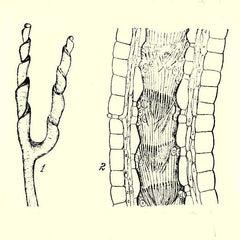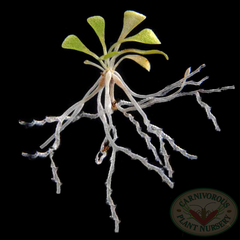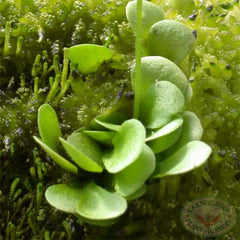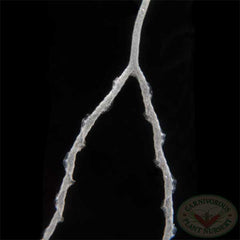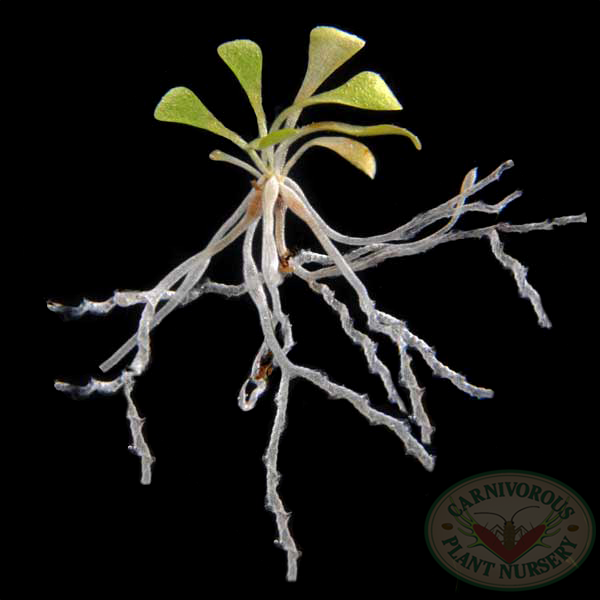
Genlisea
Corkscrew Plants
Genlisea are rare, small, semi-aquatic, tropical carnivorous plants, similar to terrestrial bladderworts (Utricularia), but with distinctive and unique subterranian traps that are often described as "spiraling lobster traps." Protozoans entering the trap can only go one way, further into the trap, where they are digested. Genlisea are less than an inch long. They are uncommon, even in their own habitat, which is typically nutrient poor, peaty wetlands or sandy seeps. They are restricted to tropical regions in Africa, Madagascar, Central and South America.
Like terrestrial bladderworts, Genlisea have no roots, but rather a short stem that branches into several, forked, spiraling snare leaves (rhizophylls). Leaves are typically oval spatulate shape and form a small rosette. Flowers are usually yellow or violet, with a spur, and 1-2+" (2-5+ cm) flowers per spike. Seeds typically come only from pollination between genetically distinct individuals. Darwin postulated that Genlisea were carnivorous, which was only proven recently. The base of the stem has a bladder like swelling that serves as a digestive chamber. Trailing from this are two arms that are twisted like a corkscrew and have a series of narrow slit openings, lined with upward pointing hairs. Microscopic organisms, protozoans such as Paramecia, are lured into the corkscrews to work their way up the one way path to the digestive pouch. Traps must be in very wet, even soggy conditions, in order for the traps to function.
Genlisea may be propagated from seed sown on damp peat in light, or more easily from leaf or "root" pulls. Plantlets will even develop from the flower bracts.
Individual Genlisea species do not as of yet have any common names, other than the generic "Corkscrew Plant."
